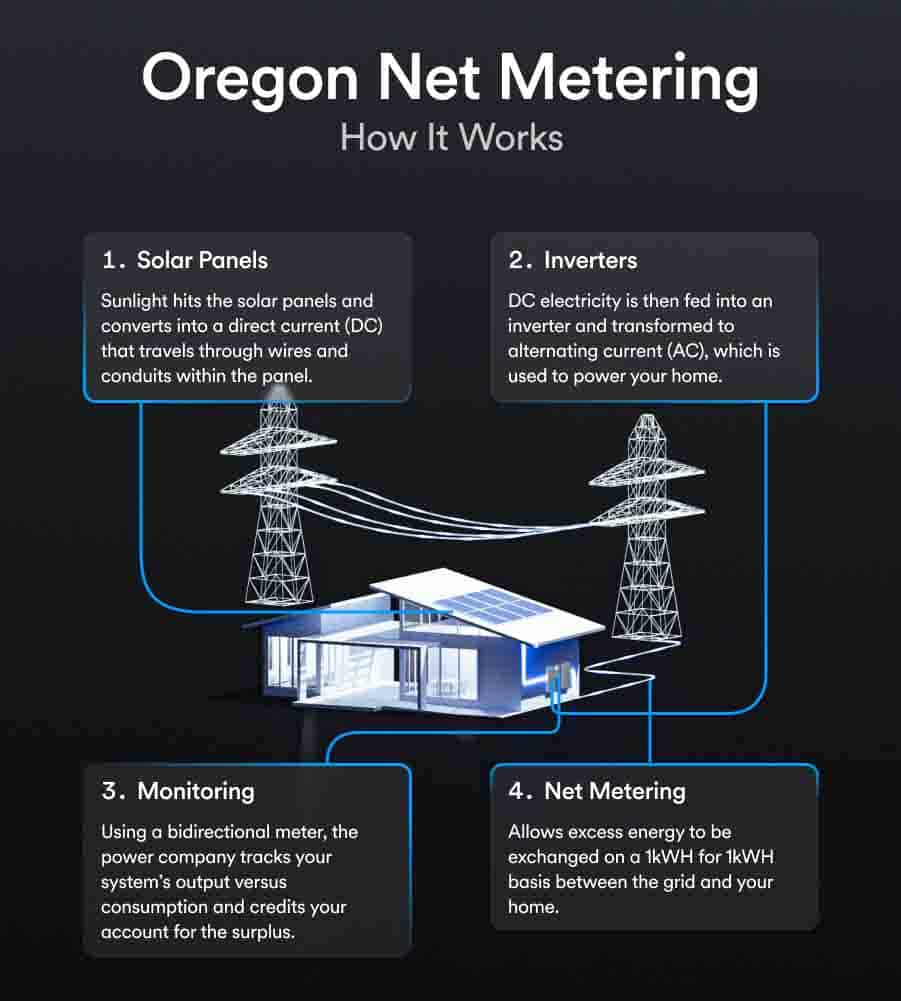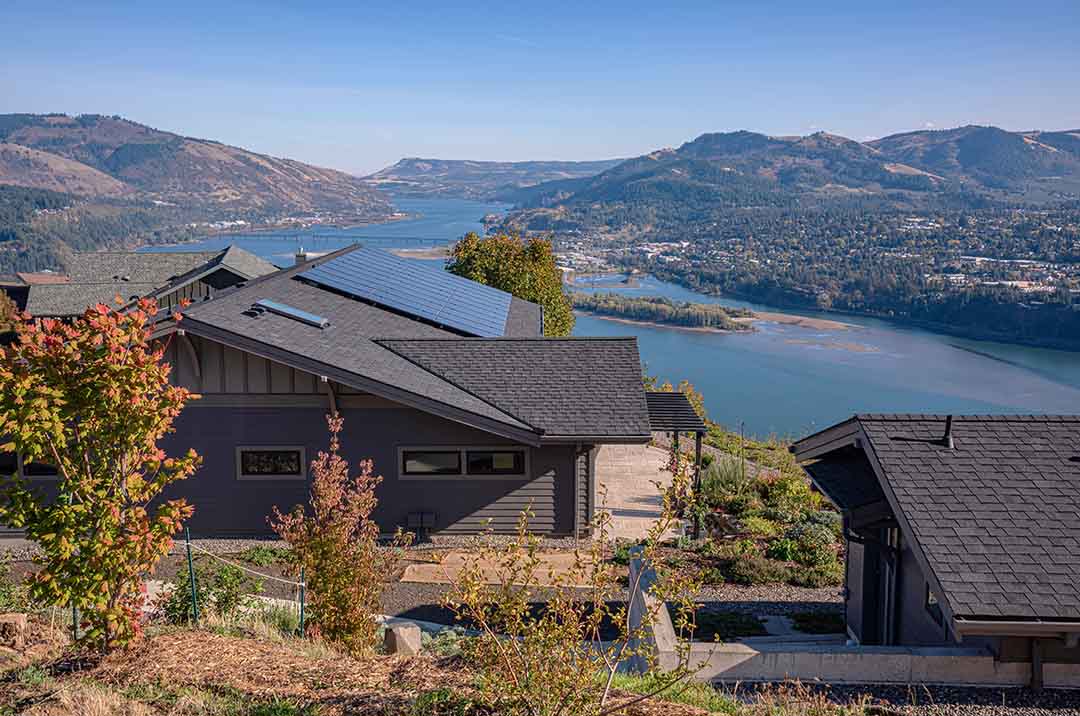How are homeowners saving every month when they switch to solar? The answer is net metering. When considering a switch to solar for your home, you might come across many new terms. One of those terms, net metering, can be a bit more confusing to comprehend.
At Purelight Power, we believe the process of switching to solar energy at home should be as transparent as possible. We created this blog to break down what net metering is, how it works, and the way it helps homeowners with solar save. Keep reading to learn more about Oregon’s specific net metering policies.
What is Net Metering (NEM)?
Net metering is a policy compensating homeowners for the excess energy their solar systems generate. With technological advancements in the last few years, solar panels are increasingly efficient and can produce more energy than the average household can use. That excess energy is routed back to the community-wide electrical grid your home is wired into.
With Oregon-regulated net metering, you receive a credit for excess power from the local power company on your monthly statement. While the credit can’t be cashed out, it’s great to have on for when your solar panels aren’t producing ready power for your home, like during longer, dark winter evenings, or foggy Oregon mornings. Net metering is also the key to ensuring homeowners who want to go solar can wipe out their power bills.
How Does NEM Work?
While you don’t necessarily have to know every aspect of NEM to have solar energy at home, it’s good to understand the basics. Whether your home is connected to Pacific Power, PGE, or another grid-tied utility, officials will come out and swap out your current unidirectional meter with a bidirectional meter. The Solar Net Metering swap should not cost you anything from the power company.
The bidirectional meter can connect to your solar power system. Any electricity your panels generate that can’t be used in your home will be tracked through the bidirectional meter. At the end of each billing period, the power company tallies how much power you sent back to the grid, subtracts the electricity you used, and bills the difference. For most homeowners with solar, there won’t be anything but the required service charge to be connected to the grid – right around $10 per month.
How Does the Credit for Energy Help You?
During sunnier months, your solar panels will produce extra power that doesn’t have a place to be used in your home. The difference is stored on your account with the power company as a credit.
You won’t be getting a check for this credit (power companies in Oregon only agree to pay in the form of a credit on the customer’s account with the utility company). However, the good news is that during longer winter nights, dense fog, exceptionally rainy autumns, and even if your part of Oregon sees a snowstorm, the credit on your account goes towards any energy you do need to pull from the electrical grid.

That’s the great part about NEM – even when they’re not generating power at that precise moment, your solar panels still help wipe out your power bill.
What happens if you generate so much extra energy with your home solar energy system that you have way more credit than you can use? To answer this, it’s important to know that Oregon power companies must hold those credits for you for 12 months so you’ll have enough time to draw on any credits accumulated.
If you still have a credit on your account for generating excess energy, you won’t simply be giving the power company free electricity. Instead, you can feel assured knowing that your credit will be helping community members who are struggling to afford their electricity. Any excess credits on customer accounts after 12-months are added to a utility assistance fund for low-income Oregonians.
By going solar, you’ll not only power your home and save money, but you’ll also be giving back to the community at no extra cost.
Purelight Can Help You Save with Solar!
Oregon’s NEM program is a massive money-saving tool for homeowners with solar. However, these programs are not set to last long – many states are attempting to take away the NEM programs for good, eliminating the financial benefits of residential solar. Oregon could be next.
Homeowners who go solar before the Oregon NEM program is shut down are still able to get grandfathered into the current programs, and Purelight Power wants to help you get there. To find out if your roof qualifies for Purelight Power’s zero-down solar program, take our 30-second survey.





